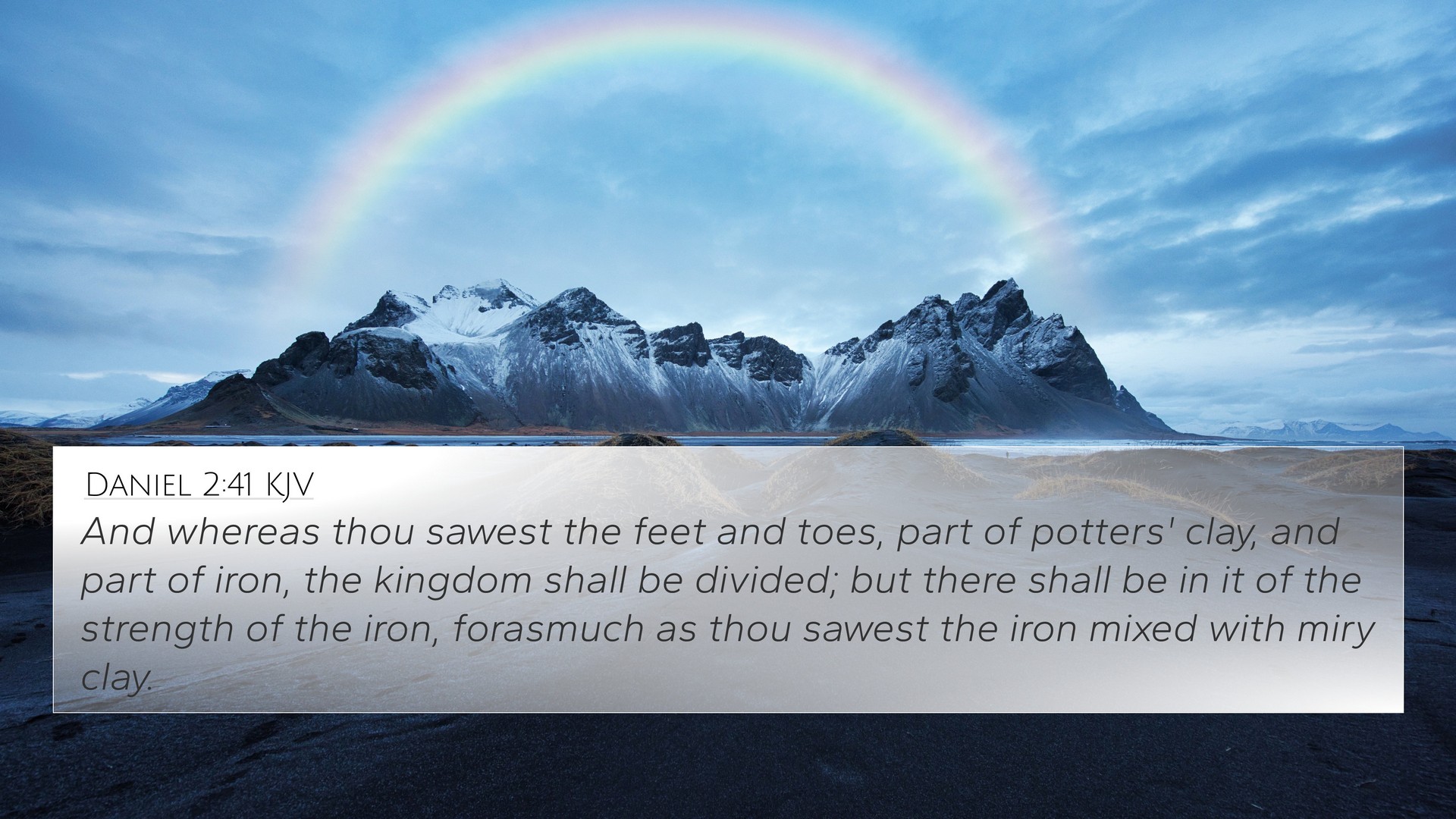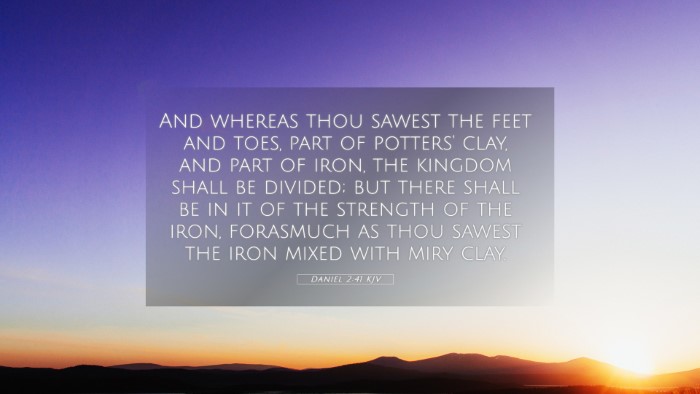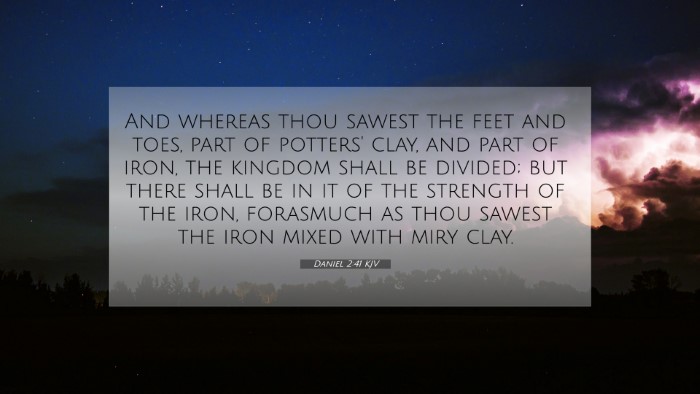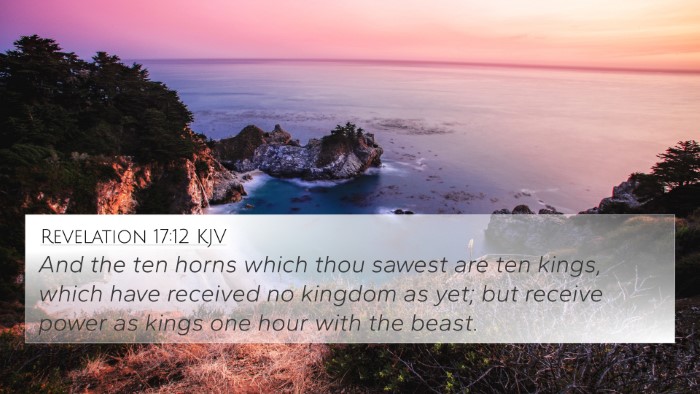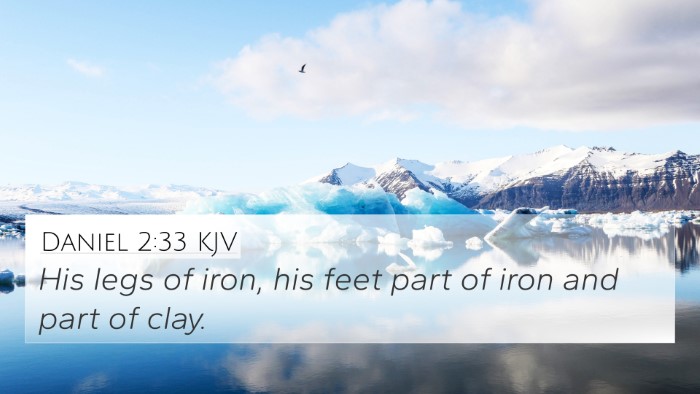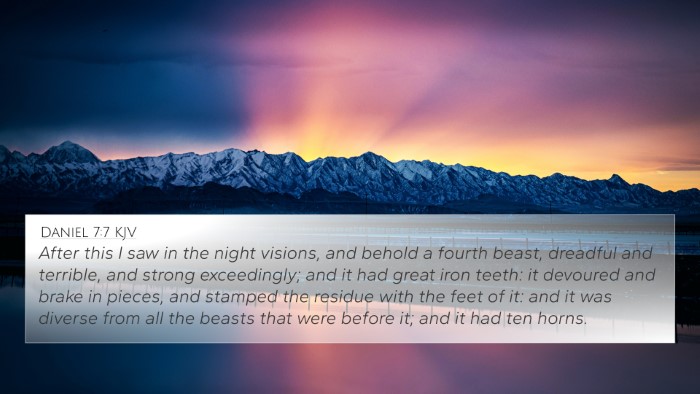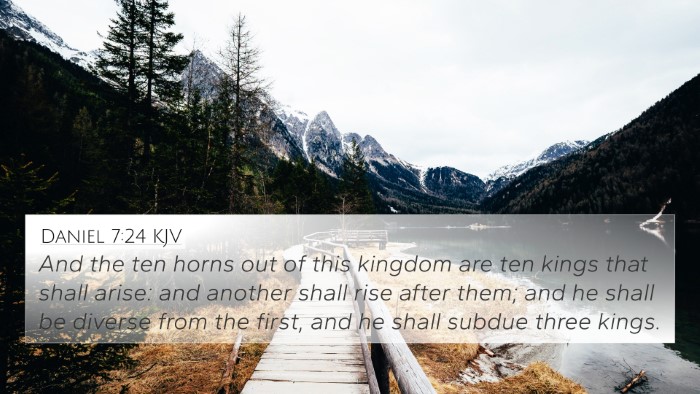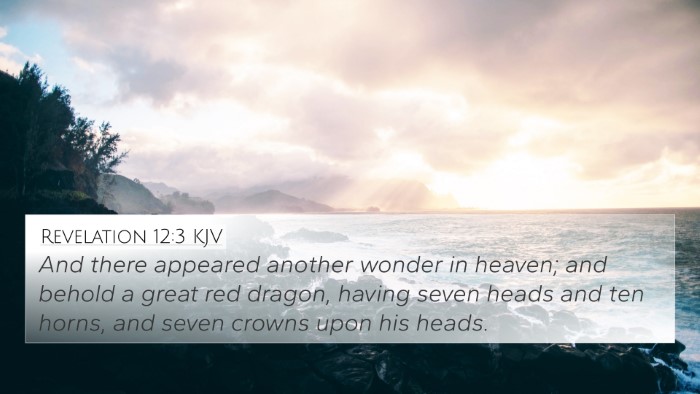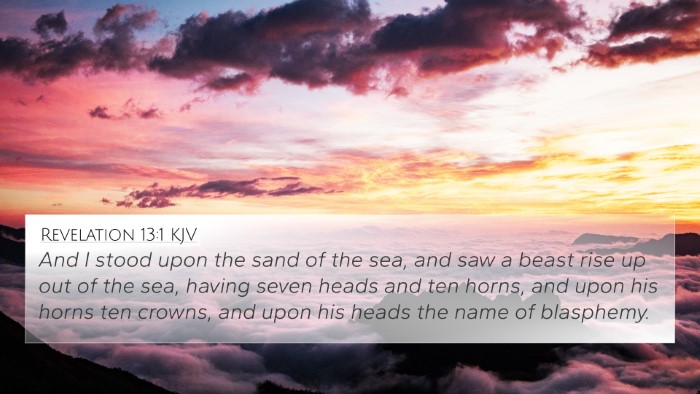Understanding Daniel 2:41
Daniel 2:41 states, "And whereas thou sawest the feet and toes, part of potter's clay, and part of iron, the kingdom shall be divided; but there shall be in it of the strength of the iron, forasmuch as thou sawest the iron mixed with miry clay." This verse is a part of the interpretation of King Nebuchadnezzar's dream, which Daniel was given insight to interpret.
Summary of Key Interpretations
This verse talks about the final kingdom represented by the feet and toes of the colossal image in Nebuchadnezzar's dream, which signifies a divided kingdom, composed of both strength (iron) and weakness (clay).
Commentary Insights
-
Matthew Henry's Commentary:
Henry emphasizes the mixed nature of this kingdom, highlighting how it contains both strong and weak elements. He notes that this duality represents the coexistence of power and fragility in earthly kingdoms.
-
Albert Barnes' Notes:
Barnes expands on the significance of the iron and clay mixture, interpreting it as symbolic of the political landscape in the latter days, where alliances might appear strong but are fundamentally unstable due to the inherent differences in the nature of the governing powers.
-
Adam Clarke's Commentary:
Clarke points out that the mention of clay suggests a mixture of people that may lack unity, indicating a period of division and conflict among nations or factions within the kingdom.
Bible Verse Cross-References
Understanding the connections between Bible verses can provide deeper insights into Daniel 2:41. Here are several related verses:
- Daniel 2:40: This verse describes the fourth kingdom which shall be strong, setting the stage for understanding the nature of the divided kingdom.
- Revelation 17:12-13: These verses discuss the kings that will give their power to the Beast, further illustrating the theme of divided authority.
- Isaiah 64:8: Here, the metaphor of clay is used again, reminding us that God is the potter and humanity is the clay, emphasizing God's sovereignty over earthly kingdoms.
- Daniel 7:23: This verse provides additional insight into the fourth beast and its empire, which ties back to the interpretation of the mixed kingdom.
- Matthew 12:25: Jesus teaches that a kingdom divided against itself cannot stand, echoing the themes of division mentioned in Daniel.
- Luke 21:9: A further affirmation of such divisions and uprisings that will characterize the end times.
- 2 Thessalonians 2:3: Discusses the 'man of sin' and the great apostasy, referring to the chaotic state of the end times which can be likened to the imagery in Daniel.
Analytical Themes
In exploring the themes present in Daniel 2:41, we find that:
- Divine Sovereignty: This verse shows God’s control over the rise and fall of kingdoms.
- Human Fallibility: The clay represents the frailty of human governance, juxtaposed with the strength of iron.
- Future Prophecy: The divided kingdom foreshadows future events concerning the last days and the coming of Christ.
Using Tools for Bible Cross-Referencing
For deeper studies on the connections and thematic references found within the scriptures, various tools exist:
- Bible Concordance: These tools help locate specific verses and their thematic relevance.
- Bible Cross-Reference Guide: Guides that show related verses across the Bible are invaluable for comparative analysis.
- How to Use Bible Cross-References: Learning to effectively utilize cross-references enhances biblical study and understanding.
Conclusion
Daniel 2:41 serves as a profound piece of scripture describing the characteristics of a divided kingdom. Through the commentaries of Matthew Henry, Albert Barnes, and Adam Clarke, we see a multifaceted interpretation that guides modern readers toward an understanding of the implications this verse holds for both its historical and prophetic contexts.
